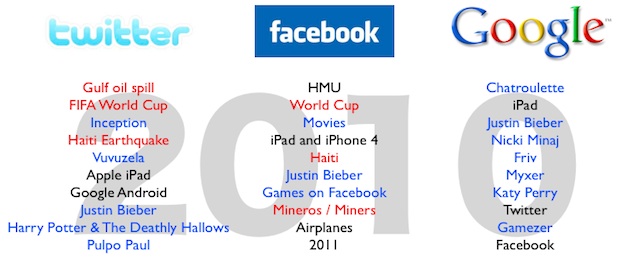

By NikNik · December 13, 2010
If you’re looking for the article that tells you how to blast your listings out to everyone on the Web, this isn’t it. If you’re looking for the article that gives you a list of all the Facebook apps that auto-post listings to your business page or wall…this still isn’t it. But if you want to know how to share your listings in a socially engaging manner on Facebook or even Twitter…then you indeed came to just the right place!
Nearly every time I teach a Facebook class to real estate professionals there is usually one agent who asks (right from the beginning), “How do I post my listings to my wall or tab?” And my reply is most often not the answer, but a question, “If you’re a consumer do you start your search for a home inside Facebook?” (Usual reply: “uh no”) Yep…that’s what I thought.
So then, why do we continue to see the Facebook Newsfeed and Walls of real estate professionals cluttered with sales pitches for their current listings? And don’t tell me it’s just the Facebook newbies? There are plenty of seasoned super tech-agents still posting “Beautiful 3 bedroom, 3 bath home in a quiet neighborhood, XYZ…call me today for more details or visit 123listing.com” on their personal profiles. Yes, on their Facebook profiles.
First, let’s remind our “salesfriends” of the basics. If you’re not already familiar with Facebook’s Terms of Service then you should know that it’s against their policy to use your Facebook Profile for commercial gain. If you want to post your listings, then do it from a Facebook Business Page. Which brings me to my next point. If you only post listings on your Facebook Page, do you REALLY think that’s going to be enough to keep folks interested or engaged (or “liking” your page)? Moreover, do you REALLY think the consumer is going to say to herself, “Today is the day, I’m ready to look for my dream home so of course I better start at Jenny Smith’s Pleasantville Real Estate page on Facebook!”
I know there’s a chance that someone in your network who’s looking to buy may be online at the moment you post that listing to your Facebook Page Wall, and may even see it in the Newsfeed. And it could be a match made in heaven (or Facebook)…it’s possible. But if that’s your strategy…go ahead, throw that dart and see where it lands.
Now let’s examine what happens when you only post listings on Twitter:
Yep, that sure gives me a reason to respond, follow you and converse. When real twitter users encounter real estate listings like the example above, one word comes to mind…starts with an “s”…spammer! So you may as well sew a big “s” on your sweater because you’ll be permanently marked that way until you change your ways.
Enough is Enough
It’s time to raise the bar and use the tools the way they’re meant to be utilized. So if you’re investing your time and effort in Facebook, Twitter and other online communication channels, remember to obey the “nature of the network”. I’m not saying you can’t or shouldn’t post your listings altogether. In fact, go for it. But don’t expect real “engagement” to take place unless you put in some real “effort” to make what you share actually “of interest”. So here are a few strategies you may want to try:
(1) Facebook – Listing Feature Post: Share your listing on your Facebook Page but instead of just regurgitating listing details (like 3 BED, 3 BATH, PRICED REDUCED), why not focus on what makes this home special. Highlight a feature of the home (unique yard, new kitchen, awesome view) or better yet the surrounding neighborhood or community. Give us a peek into the lifestyle…give us a reason to want to learn more, a reason to actually comment.
When you broadcast listing details the only engagement you’ll most likely yield are a couple of “likes”…and that’s usually someone who likes you, not your “NEW LISTING”. Those “likes” are not going to give you enough “FB Edge” to rank well in the Newsfeed…which means you’re counting on your targets visiting your Facebook Page on a regular basis to see if you’ve posted their dream home (that they may or may not be planning to buy right now). So instead think about creating conversation around an interesting element of your listing with text, a photo, or video…and then link to a landing page where people can choose to get more details. Thank you Nashville & Beyond for this ROCKIN’ example:
And another stellar example from @FloridaSunSales of how to accomplish sharing a “listing feature”, but on Twitter:
(2) Facebook – Social Listing Post: Rather than posting listing features, post HOW you’re getting down to business on any given day. Working with clients, prepping for a showing, waiting at an inspection, or better yet….share the interesting work related occurrences that pop up in your day! Just think about answering “What are you up to?” as if a friend were asking. Thank you Mizzle for this ROCKIN’ example:
(3) Facebook – Proactive Listing Post: You see a house on Broker’s Tour and immediately think of a certain client, or a client who’s always looking for that “perfect forever home”. Ever considered taking a photo and posting it to the wall or sending it via message to that client. Well, that’s exactly what Shannon King and Heather Elias do for their clients. Not only is this proactive strategy helpful to the potential buyer….but think about all the other people that will notice your initiative! Clearly these ladies have the expertise to match their clients with the home and lifestyle they are looking for! That’s talent…that’s a local market expert! Thank you LocoMusings for this ROCKIN’ example:
(4) Facebook - Custom Tabs: If you focus your Facebook Business Page on your local market area and aim to deliver relevant info that local consumers care about…well, BRAVO! I’ve seen many agents migrate from personally branded pages to geographic or niche focused pages…which is great! But don’t forget to highlight who’s delivering this helpful content…YOU! So consider adding a custom tab that showcases your expertise and any tools you may want to offer. Your tab can also welcome locals to your page and provide important calls to action: like my page, sign up for my newsletter, search for homes (on your site), etc. This way you can still provide all the relevant local content that keeps targets coming back for more, but also have a place where your LIKERS know to go for YOUR real estate expertise.
MyTechOpinion
At the end of the day, you need a plan of action for gaining listing exposure online. Which most likely starts by (1) optimizing your MLS listing details, (2) creating a landing page to feature the listing on your own online hub (Website/blog), and (3) syndicating your listing to places where consumers actually go to look for real estate (Trulia, Zillow, Realtor.com). When it comes to Facebook, Twitter and the like….you need to remember why you are there (i.e. cultivate relationships). And don’t forget the nature of the SOCIAL network you’re using!









